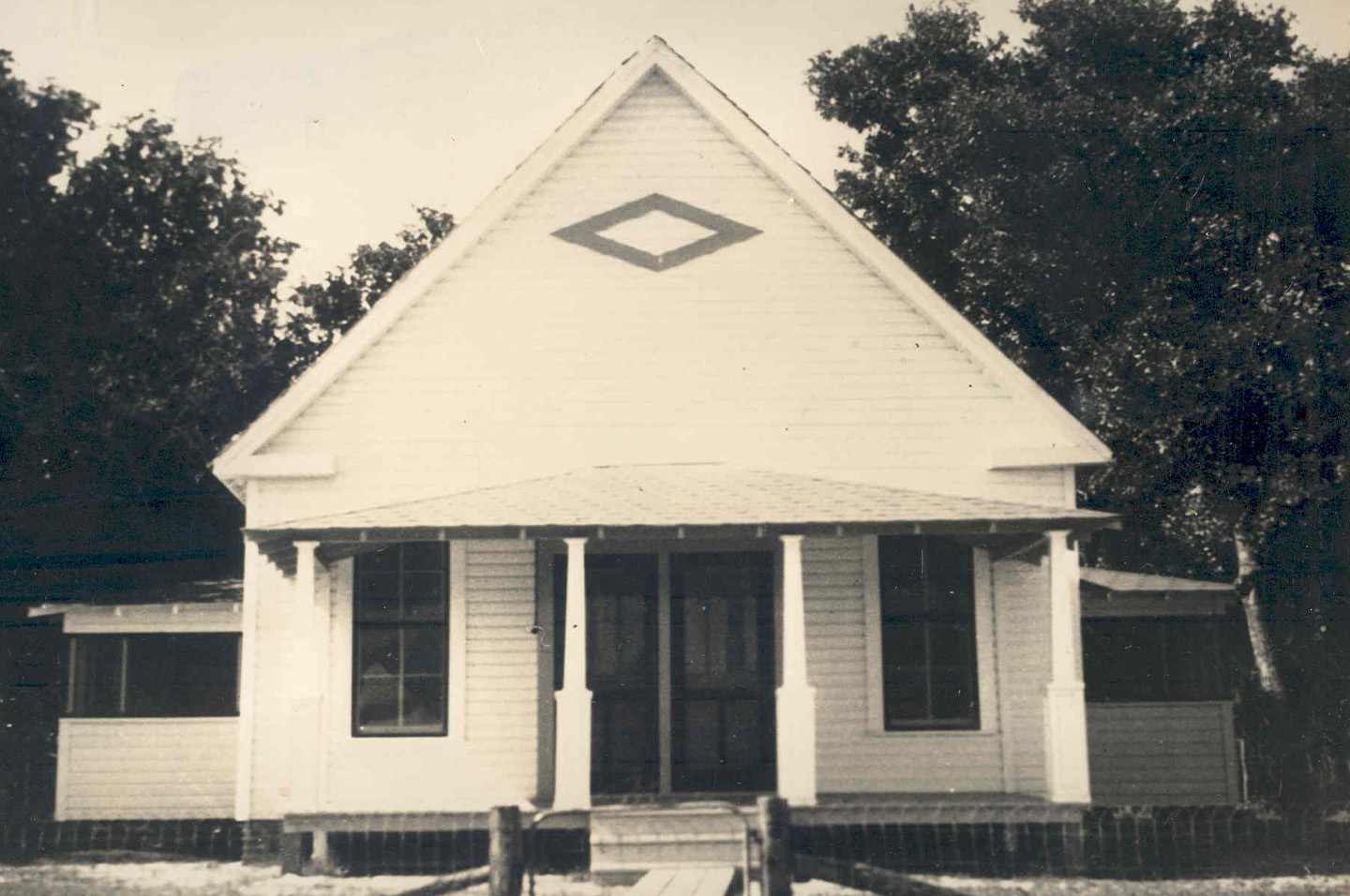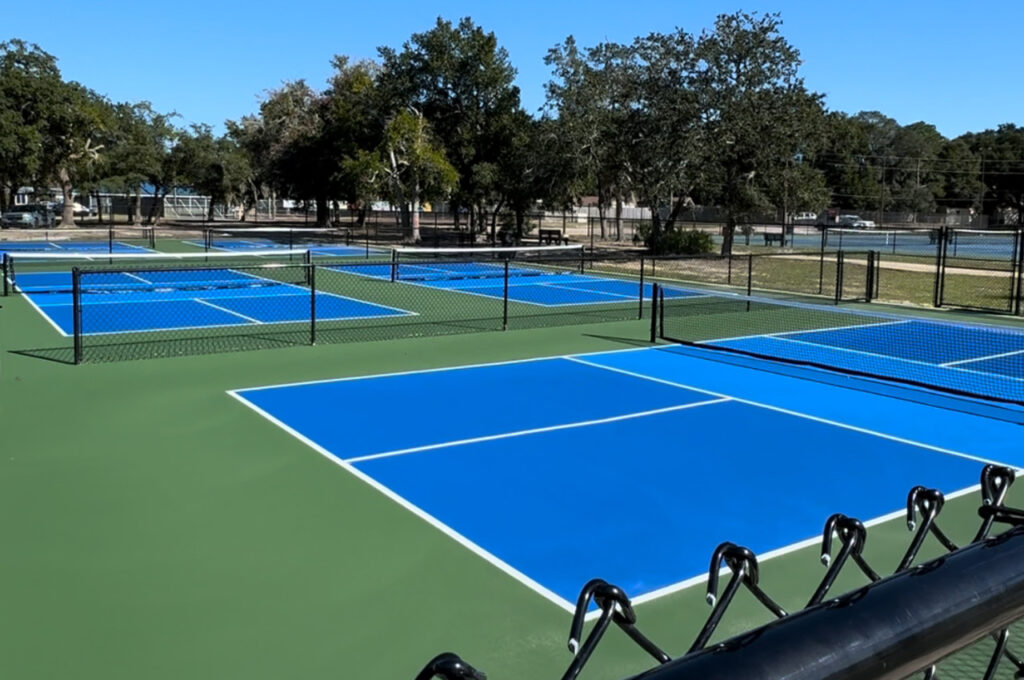In the heart of downtown Fort Walton Beach stands a tangible link to the city’s educational roots: the Camp Walton Schoolhouse Museum. This century-old building, which has been moved three times since its construction in 1912, now serves as a window into the community’s past.
- Gail Meyer, Museum Manager for the City of Fort Walton Beach Heritage Park & Cultural Center, shared the schoolhouse’s rich history with Get The Coast.
“In the early 1900s, America had over 200,000 one-room schools,” Meyer said. “Each provided more than those three ‘R’s’ (reading, writing and ‘rithmetic) to their community. Each served as a focal point of community life and provided a solid foundation on which communities and future community leaders based their lives.”
The story of the Camp Walton Schoolhouse begins in 1911 when Erwin S. and Anna Buck donated land on Main Street (across from the Greater Fort Walton Beach Chamber of Commerce) for a school. At the time, the town’s population consisted of about 40 voting men, with a total of around 250 residents.
- “The whole community worked together to build the first one-room school of native pine and oak for the children of Camp Walton, later to be Fort Walton Beach,” Meyer explained. “The cows and pigs far outnumbered the people. All travel was by dirt trails, laughingly called roads, or by water if you could.”

The school’s early days were not without challenges. Built in a farmer’s field, the building faced an unusual problem: animals seeking shelter underneath it.
“There were no laws to keep animals inside fences and they wandered freely around town,” Meyer said. “They were constantly getting under the school to keep cool in the shade. However, along with the animals came fleas.”
- This issue was so severe that students were given long sticks to poke the pigs out from under the building, and the school was closed several times a year for flea removal.

Initially administered under Santa Rosa County, the school came under the jurisdiction of the newly formed Okaloosa County in 1915. The first teacher, Miss Minnie Tippens from Andalusia, Alabama, taught 15 students across grades 1-8 in a single room.
“In those days, a lady teacher could not be married,” Meyer noted. “If a lady teacher wished to marry, she was expected to give up her career.”
The schoolhouse lacked modern amenities like running water and electricity. In those early years, the town had no paved roads or bridges. Children walked or rode to school on a horse or wagon. Some even rowed a boat to school, according to Meyer.
“Plumbing consisted of two outhouses and a well for drinking water,” Meyer said. Despite these limitations, the building served multiple purposes for the growing community.
- “The school was used as a church on Sundays, a place for town meetings and for socials on Friday nights,” Meyer added.
As the town grew, so did the school. In 1927, a second room was added for high school students. By 1934, the original room was divided to accommodate more students, making it a three-room school with three teachers.
The schoolhouse’s tenure as an educational institution came to an end in 1936. “Population growth coupled with the Labor Day Hurricane of ’36, closed the Camp Walton School for good,” Meyer explained. The new brick Fort Walton Grammar School school was built to accommodate the increasing number of students.

The old schoolhouse narrowly escaped demolition when John W. Brooks, an employee of Gulf View Motor Company, asked to have the building, according to Meyer. It was moved to Fourth and Tupelo, where it served as an apartment house for families during World War II.
In 1968, Dr. James Langston and his wife purchased the building and continued renting the apartments for several years. By the mid-1970s, the structure had fallen into disrepair and was slated for demolition once again.
- “In 1974 the Langstons contracted the fire department to use the abandoned building as fire practice,” Meyer recounted. “Three days before the scheduled burning, the Junior Service League contacted Dr. Langston and convinced him to donate the building as a restoration project for a historic museum.”
The Junior Service League, along with the School Board of Okaloosa County, moved the schoolhouse to First Street in 1974. After extensive research and restoration, the Camp Walton Schoolhouse Museum opened to the public in 1976.
“Research into its history, adaptive restoration, and preservation were undertaken to create the Camp Walton Schoolhouse Museum,” Meyer said. “The museum opened to the public as an educational museum for educational field trips, special programs, seasonal events and summer tourists.”

In 1986, the City of Fort Walton Beach took over the operation of the building and its programs. Twenty years later, in 2006, the schoolhouse found its current home as part of the City of Fort Walton Beach Heritage Park and Cultural Center.
“Heritage Park today includes the Indian Temple Mound Museum, the Fort Walton Temple Mound, the Camp Walton Schoolhouse Museum, the Garnier Post Office Museum, and a Civil War Exhibit Building,” Meyer explained.

The Camp Walton Schoolhouse Museum now stands as a reminder of the community’s educational heritage and the importance of one-room schools in early 20th century America.
- “One-room school teachers were expected to teach, yes, but they were also artists, scientists, musicians, counselors, confidants, janitors, disciplinarians, and friends,” Meyer reflected. “They had a profound influence on the students in their care. A town that had a school had a future.”
Today, visitors to the Heritage Park can step back in time and experience a piece of Fort Walton Beach’s history. The park is open Tuesday through Saturday, offering a unique opportunity to explore the area’s 14,000-year history.
“We are open during the museum expansion so come and share Fort Walton Beach’s wonderful and unique 14,000-year history,” added Meyer.”
The Camp Walton Schoolhouse Museum embodies the enduring spirit of a community that valued education and worked together to build a future for its children. From its humble beginnings as a one-room schoolhouse to its current role as a historical museum, it continues to educate and inspire visitors about the importance of preserving local history.







